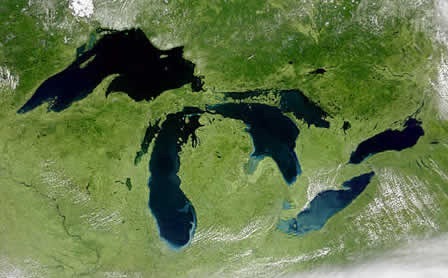Lake George task force takes on Asian clam
0
Asian clam (Corbicula fluminea)
The Asian clam has officially overstayed its welcome. The Lake George Asian Clam Rapid Response Task Force, a collaboration of the Darrin Fresh Water Institute, Lake George Park Commission, Fund for Lake George and others, has targeted the Asian clam in an effort to reduce their population in Lake George. The task force began treating the lake in late April, laying 50-by-7-feet benthic mats on its floor. So far, 612 mats have been placed, completing the first phase of the project.
“Essentially, we’re using mats to smother the clams,” said Sandra Nierzwicki-Bauer, Darrin Fresh Water Institute executive director. She added mats had also been used to treat Eurasian milfoil, the only difference being those mats blocked the plants from receiving sunlight. The mat treatment will last 45 days. The LGACRRTF will also use suction harvesting to remove the clams from the 5.23-acre space they occupy.
The Asian clams (Corbicula fluminea), while diminutive, are a formidable disruption to the lake’s ecosystem. The clams start out as barely visible, but grow to be the size of a nickel. The tiny invaders are hermaphroditic, and one clam can easily reproduce 2,000-8,000 clams twice per year. The clams also block water intake pipes in bodies of water, and their waste encourages the growth of detrimental algae. The clam was first spotted August 2010 in Lake Avenue beach, spanning about 2.5 acres. Treatment timing is crucial because the clams prefer warmer temperatures to breed.
“Once the water temperatures rise, they begin to reproduce for the season … and they will spread,” Nierzwicki-Bauer said.
Peter Bauer, executive director of the Fund for Lake George, said the mats will remain in place until mid-July.
“We need to kill as many as possible,” he said. “Results from this treatment will inform decisions about subsequent treatments.”
The Asian clams are based near one of the lake’s bustling commercial belts, home to more than 750 motel rooms and 150 boat slips. However, Walt Lender, Lake George Association executive director, said treatment will not have a negative impact on business.
“We’ve already met with half a dozen property owners; we listened to their concerns, and we’ll do everything we can do to accommodate those concerns,” Lender said.
To that end, in order to ensure the treatment is successful, the task force has taken steps to make locals aware of the treatment and mindful of their activity in treated areas. Boaters are asked to go slowly, and swimming is banned in treated areas.
“We are doing everything we can to minimize any inconvenience to lake users … we hope that any inconvenience seen this year is far outweighed by the long-term success of removing this invader,” Lender said.
Although the treatment ends in July, locals can assist with preventing the further spread of the Asian clam by not using clams as bait, drying anything that comes in contact with the water, and notifying the task force if they find any clams.
Taking out the Asian Clam before it takes over Lake George [WYNT.com] Scientists fighting back against Lake George Asian Clam invasion [YNN.com] Asian Clam Eradication Starts Monday [Lake George Mirror Magazine] Lake George Launches Attack on Invasive Clams [Lake George Mirror Magazine] Asian Clam [Lake George Association] Lake George Asian Clam Eradication Project [Lake George Asian Clam Rapid Response Task Force] Lake George Asian Clam Eradication Project [Lake George Asian Clam Rapid Response Task Force photo gallery] Eurasian Milfoil [Invasive Species: Aquatic Species]
Image Credit: http://en.wikipedia.org/wiki/File:Corbicula_fluminea.jpg













